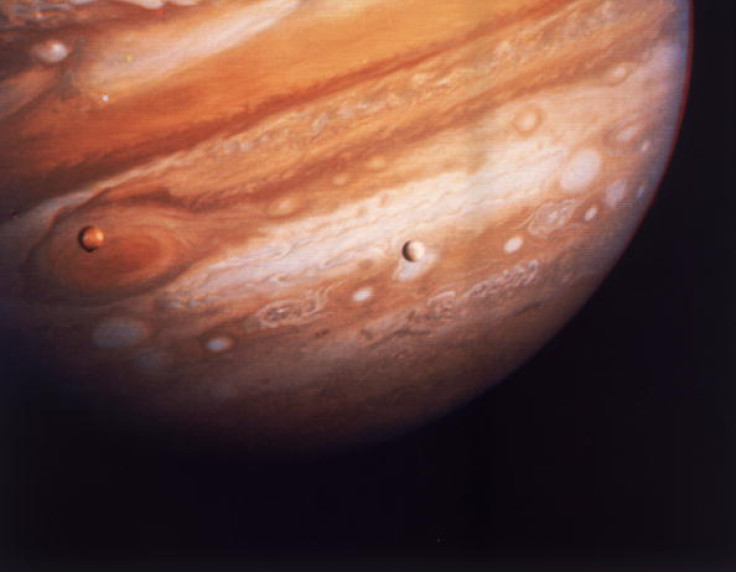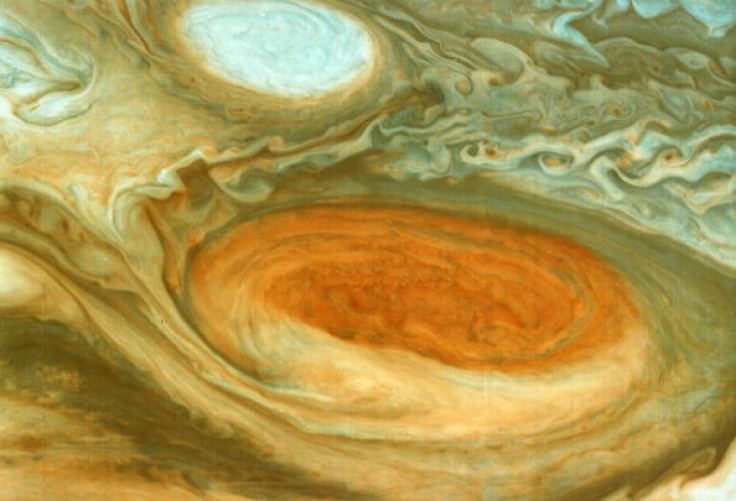Juno: Facts about Jupiter as Nasa spacecraft prepares to arrive at the gas giant
On 4 July 2016, the Juno spacecraft will arrive at Jupiter, five years after being launched. Although this is not the first human mission to Jupiter, it will be the first time a spacecraft pierces below the planet's thick clouds.
The mission hopes to find out more about the huge planet – the biggest of our solar system – which has fascinated generations of astronomers with its unique features.
The gas giant
Jupiter is big – really big. It is two-and-a-half times more massive than all the other planets of the solar system combined.
Its polar diameter – the distance between its opposite poles – reaches more than 133,000 kilometres (around 82,600 miles). As a comparison, the Earth's polar diameter measures 12,713 kilometres (7,900 miles).
Jupiter is the fifth planet out from the Sun, located 778 million kilometres (484 million miles) away from it. This is five times the distance between the Earth and the Sun. It is also the fourth brightest object in the solar system, after the Sun, the Moon, and Venus, so it can sometimes be seen with the naked eye from our planet.
Jupiter has a ring system composed of three main components: a pair of very faint outer rings called the 'gossamer rings', a wide, flat main ring, and a thick inner ring called the 'halo'. It is believed they were created by dust thrown off by impacts on Jupiter's small moons.

Jupiter is nearly entirely made up of gases, mostly hydrogen and helium, so its surface is not solid. However, NASA experts believe that Jupiter may have a solid core the size of the Earth.
The gas giant's surface appears covered in thick red, brown, yellow and white clouds, which Juno will attempt to pass through to learn more about the planet's composition, gravity field, magnetic field and polar magnetosphere.
A planet of extremes
Jupiter also holds various records which have established its reputation as a planet of extremes. For example, it has the shortest day of any planet in our solar system. Indeed, it spins on its axis in just over nine hours and 55 minutes. However, the time the planet takes to travel around the Sun is a lot longer – 11.8 terrestrial years.
Jupiter also has the most moons of any planet in the solar system, with 67 natural satellites in orbit. One of them is Ganymede, the largest moon in the entire solar system.

The planet is also known for its extreme weather. The big red spot that we see on the planet is the largest storm in the solar system, which has been raging for hundreds of years and is larger than Earth itself.
Since the planet has no solid surface, the temperature cannot be accurately measured in one place. Scientists do know it could actually vary greatly between the upper atmosphere and the core. At the upper edge of the cloud cover it is very cold, at around -145C. However, much further down in the atmosphere, at the core of the planet, the temperature may reach as high as 35,700C.

We have known about Jupiter for thousands of years. The first recorded observations were made by the ancient Babylonians in the 7th or 8th century BC. Tablets show how they tracked it's path using geometry 1,400 years before Europeans worked out how to.
Yet despite thousands of years of study, we still know very little about Jupiter. With Nasa's Juno mission, scientists hope to shed a light on the origin and evolution of Jupiter, look for solid planetary core, map its magnetic field, measure water and ammonia in the deep atmosphere, and observe its auroras.
Scott Bolton, principal investigator on the Juno mission, told IBTimes UK: "I want to see how much water is in there and if there's a core of heavy elements in the centre. They're two of the biggest outstanding questions.
"In many ways by going back and looking at Jupiter, we are turning back the clock to try to understand the very first steps that allowed the sun to form ... studying Jupiter is the only way you're going to learn about that first step."
© Copyright IBTimes 2024. All rights reserved.







